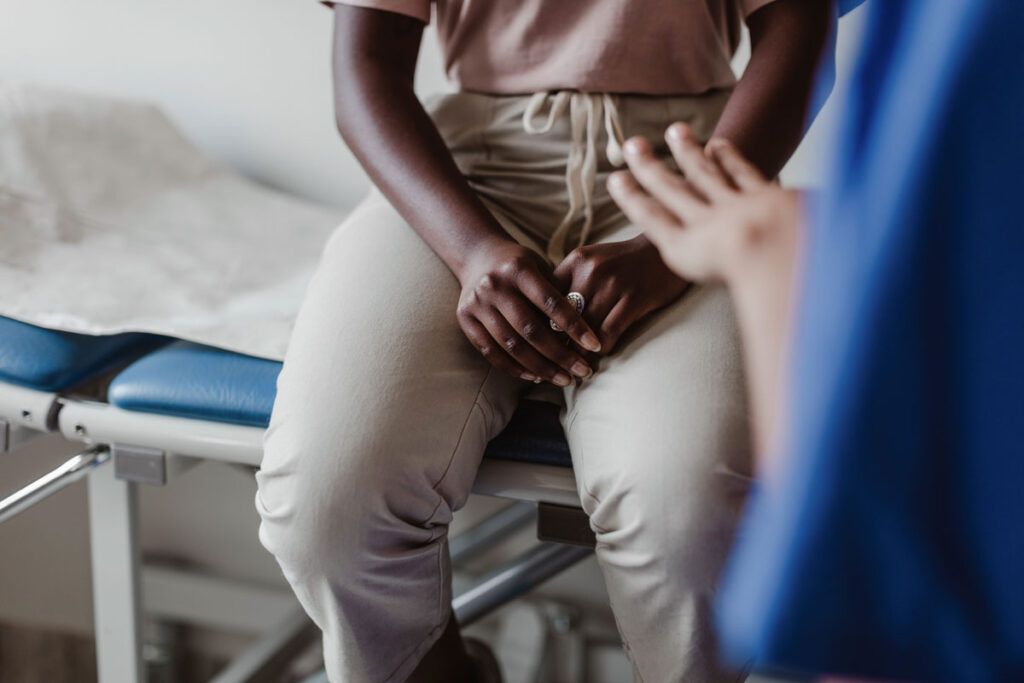A vaginal yeast infection is a fungal infection that occurs in the vagina and causes a wide range of symptoms. Certain signs of a yeast infection, such as a burning sensation when urinating, may be mistaken for other conditions, like a urinary tract infection (UTI).
There are several specific signs to look out for to help work out whether you have a yeast infection. These include:
Vaginal itching

Itching is a common symptom of a vaginal yeast infection. However, itching can occur due to several health conditions that involve the genitals. These include an allergic reaction to certain products, like using a new soap, eczema, or other infections that may cause inflammation.
Vaginal pain
Vaginal candidiasis can cause intense pain in the vagina due to the inflammation that it causes.
The pain can occur especially when you pee or during sexual intercourse. If you experience pain when you pee, this typically means that the urethra, the tube that leads the urine out of your body, is also inflamed.
Burning
A common symptom of a vaginal yeast infection is experiencing a burning sensation in the genitals due to the inflammation that occurs. You may notice this when you pee if your urethra is inflamed.
Discharge
Having thick white vaginal discharge is a common symptom of vaginal candidiasis. The discharge looks similar to cottage cheese.
The vaginal discharge that occurs with a yeast infection does not usually have any specific smell. If you notice any unpleasant odor, it may be a sign of another infection.
Skin rash
If you have a yeast infection, a dry and itchy skin rash may develop around and on your vagina. Your skin may appear red or discolored, and the rash may involve the folds of your skin, genitals, and buttocks. You may also notice some small pustules growing on the area affected by the rash, which may cause skin breakdown.
Swelling
Vaginal candidiasis may cause swelling in the vulva. This can develop due to the inflammation in your genitalia when you have a yeast infection. If you notice masses or ulcers, speak with a doctor immediately, as this could be a sign of something more serious, like a viral sexually transmitted infection.
Painful urination
If the yeast infection has caused inflammation of the urethra, you may experience pain and a burning feeling when you pee. This symptom is often mistaken for a UTI. If you experience pain when you go to the bathroom, and the pain worsens or does not improve after a couple of days, speak with a doctor.
Treatment options for a yeast infection
The treatment of vaginal yeast infections depends on the severity of the infection and your symptoms. Doctors may prescribe a course of antifungal medications to apply inside your vagina. The treatment duration can vary depending on the medication. It usually takes 1–7 days to work.
The drugs that doctors typically prescribe for vaginal yeast infections come in the form of oral pills or topical medications, including:
- nystatin (Mycostatin)
- econazole (Gyno-Pevaryl 150)
- fluconazole (Diflucan)
- amphotericin B (Fungizone)
- miconazole (Monistat)
- clotrimazole (Lotrimin)
However, oral antifungal medications are not suitable for people who develop a vaginal yeast infection during early pregnancy, as long-term and high dose usage can lead to pregnancy loss. In that case, doctors will only prescribe topical treatments.
If you develop recurrent vaginal yeast infections, a doctor may recommend suppressive therapy and prescribe a 6-month course of oral fluconazole. This should significantly reduce the risk of vaginal candidiasis coming back.
Doctors may also recommend some over-the-counter (OTC) medications to help improve pain and other symptoms you may experience while the fungal infection resolves.
If you’re taking drugs to treat the yeast infection, avoid having sexual intercourse until you complete the course. This is because the ingredients contained in certain antifungal medications may weaken condom and diaphragm materials, exposing you to unplanned pregnancy. Sexual intercourse can also cause irritation, worsening the inflammation in your genitals.
If you need help covering the cost of medications, the free Optum Perks Discount Card could help you save up to 80% on prescription drugs. Follow the links on drug names for savings on that medication, or search for a specific drug here.
